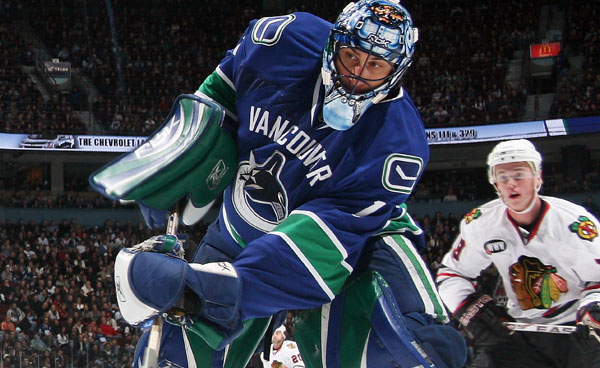Roberto Luongo is the latest National Hockey League player to join the “decade deal” club. This Wednesday, Luongo agreed to a 12 year, $64 million contract extension with the Vancouver Canucks. Luongo is arguably the top goaltender in the NHL at the moment.
Luongo will make $7.5 million during the upcoming season, the last of his current deal. The new deal’s $5.33 million salary cap hit is very reasonable for a player who could likely make close to twice that amount elsewhere in the league.
But Luongo wants to win a Stanley Cup, and with the Canucks having re-signed the Sedin twins (Daniel and Henrik) earlier this summer, the team certainly has a solid core in place for the next several years. Each side is taking a risk in signing a contract of this length, but with Luongo, it should be money well spent.

4 replies on “Bobby Lu’s New Deal”
why do you see such long contracts for NHL but it’s not the same for really any other sport? whats with the trend? just curious.
I’m starting to think NHL long term contracts (especially with star players) are to get butts in the seats.
Long term contracts aren’t unprecedented in the other major sports (Michael Vick’s 10 year, $130 million deal and A-Rod’s 10 year, $275 million deal come to mind). But in the NFL, player contracts are not guaranteed (at least for now), whereas NHL contracts are. MLB teams don’t have the salary cap that NHL teams do. And NBA contracts have term limits on them (6 or 7 years I think).
I guess the rationale behind NHL teams doing this is that they may be able to get a player for a “bargain”. Alex Ovechkin signed the biggest of these deals, $124 million over 13 years. His salary cap number is just over $9.5 million per season. However, the maximum that a player can be paid is 20% of the salary cap. So with a salary cap of $56.7 million, Ovechkin could be making over $11 million per season if he had demanded the maximum. Before the economic meltdown when the cap increased approximately $5 million each season, this seemed like a pretty good deal. With the cap only increasing by $100,000 for the current season, it probably doesn’t look as good.
One concept that I’ve heard discussed is the possibility of maintaining the salary cap but having players contracts be a percentage of the cap instead of an actual dollar figure. I don’t know if the NHLPA would ever go for it (I’m almost certain they wouldn’t). But it would be pretty interesting to see in practice.
Thanks for the good explanation Dan.
-cruz